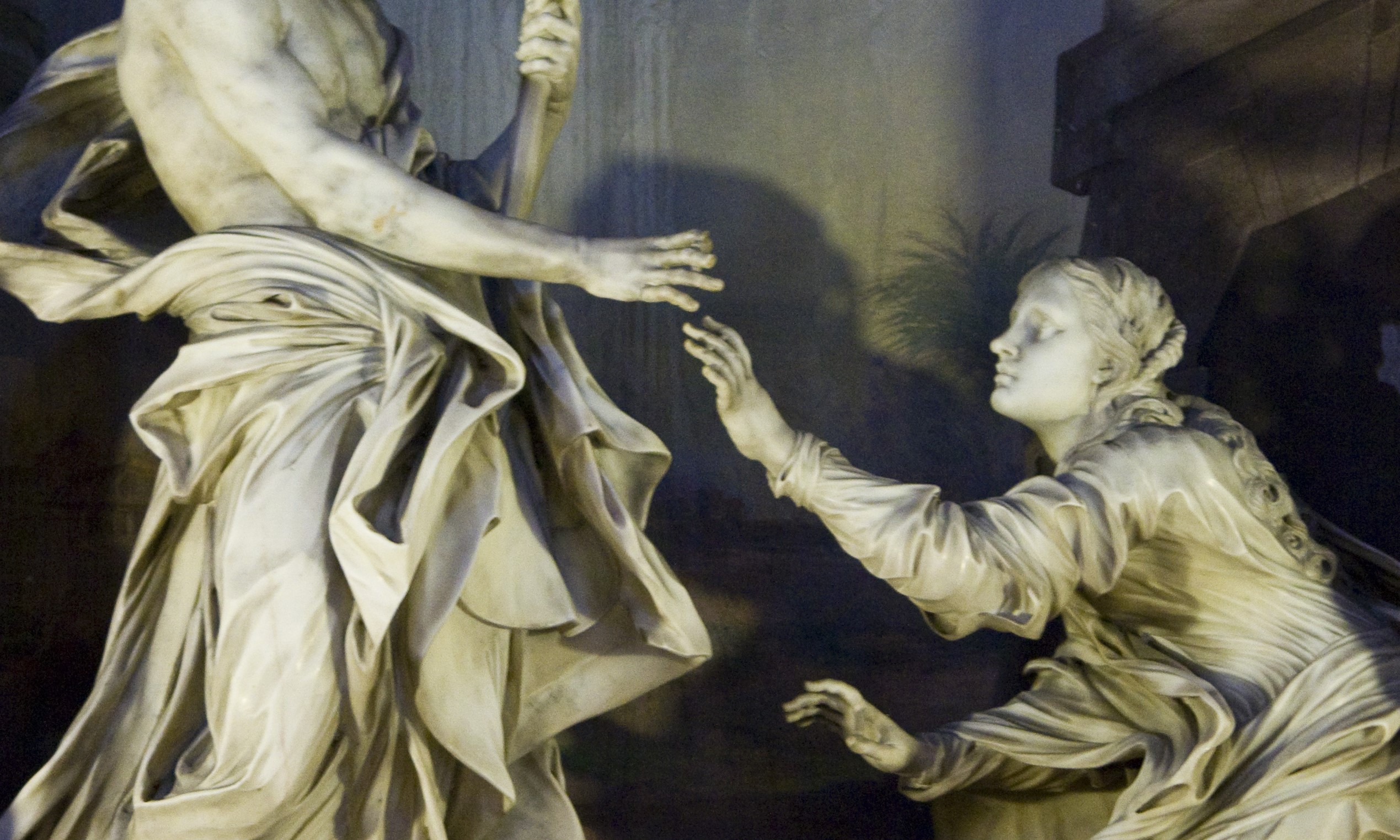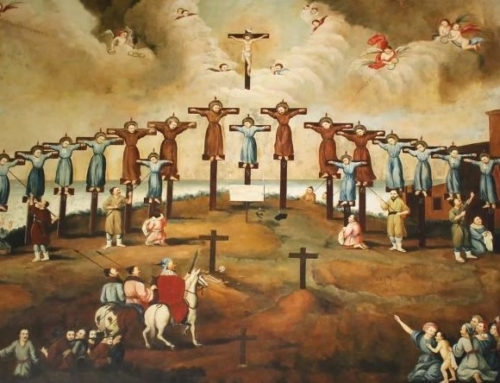Saint Mary Magdalene is called the apostle to the apostles. She was the first person to meet the Risen Christ on Easter morning, and was sent by Jesus to tell the apostles the truth of what she had witnessed. Today’s Gospel account from John recalls this encounter, yet if we look closely, we see that Mary could not preach the good news of the Resurrection until she was inwardly transformed by the Risen Christ.
As the Gospel begins, we find Mary weeping, and upon seeing Jesus she thinks that he is the gardener. It is only after hearing Jesus call her by name that she exclaims “Rabbouni,” meaning master or teacher (John 20:16). In what seems a natural reaction upon seeing someone who had died a few days earlier, she rushes to our Lord, but he stops her from coming any closer with abrupt words: Noli me tangere, or “do not touch me,” stating further “for I have not yet ascended to my Father” (John 20:17).
Why would our Lord stop one of his closest disciples from drawing nearer? To be clear, this is not a Gospel endorsement of social distancing, something that we are all too familiar with in the midst of our current pandemic! Rather, our Lord stops Mary because she is still clinging to a worldly mindset, from which she needed to distance herself. In his Commentary on the Gospel of John, Saint Thomas Aquinas, following upon the interpretation of Saint Augustine, says that Mary “had some faith in Christ, which was that he was a holy man; and this was why she called him Master.” Mary was still looking at Jesus from an earthly perspective rather than a heavenly one, and “had not yet reached the point of believing that he was equal to the Father and one with God.” Christ forbids her to approach as if to say “do not allow what you now believe of me to be the limit of your faith, for I have not yet ascended to my Father” (Ioan. 20, lec. 3, n. 2517). The reference to Christ’s forthcoming Ascension highlights his heavenly origin and destiny, something which Mary needed to recognize through an interior transformation caused by the grace of the Risen Lord.
Christ’s Resurrection leaves us with a choice. Do we see him as simply a great teacher and nothing more, or as the Son of God who defeated sin and death? Are we willing to lay aside our old selves—be it stubborn indifferences, pettiness, prideful selfishness, and most especially our sins—in order to follow him who conquered the grave? It is from these things that we must completely distance ourselves in order to approach the Risen Christ in faith and trust. The Lenten season that has just concluded gave us ample opportunities to examine the things in life from which we need to turn away. Now in this Easter season, we are afforded an abundance of grace to respond like Mary to the presence of the Risen Christ.
And how did Mary respond? St. Thomas notes that in this Gospel account, our Lord gave two commands to Mary: the first was negative, that is, not to touch him. This came when her faith was still uncertain. The second command was positive, in that he commanded her to “go to my brothers and tell them, ‘I am going to my Father and your Father, to my God and your God’” (John 20:17). It was in this commission that Mary “had the office of an apostle; indeed, she was an apostle to the apostles insofar as it was her task to announce our Lord’s Resurrection to the disciples” (Ioann. 20, lec. 3, n. 2519). In order to do this, Mary needed an interior conversion, a recognition that the one before her was indeed her Lord and her God, who saves us from our sins. Only then could she go and tell the disciples: “I have seen the Lord” (John 20:18). The Risen Lord invites us to do the same, proclaiming the good news that he has conquered sin and death.
✠
Photo by Fr. Lawrence Lew, O.P. (used with permission)







